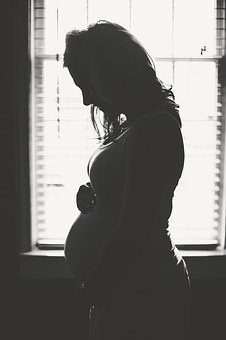Christmas Research Snippet: Hypnotism & Babies
Donald Robertson, NCH Research Director
For personal reasons, I’ve been delving into the research relating to hypnotism and childbirth recently, an area that, I confess, I’ve largely overlooked before. Throughout its entire history, hypnotherapy has been used in relation to childbirth. Even James Braid, the founder of hypnotherapy, reports a case where hypnotic suggestion was used to induce childbirth early for medical reasons. However, the largest and most systematic use of hypnosis for issues relating to childbirth occurred in the Soviet Union at the start of the 20th century, based on the Pavlovian approach to hypnosis and psychotherapy. Tens of thousands of women received hypnosis and a surprising amount of data was collected on its use. In order to make it accessible to a wider audience, by being conducted in a group setting, the hypnotic method was replaced by a psycho-educational method termed “psychoprophylaxis”, meaning “psychological prevention” of pain and anxiety during childbirth. The French obstetrician Dr. Fernand Lamaze visited Moscow in the 1940s to study the Pavlovian psychoprophylactic method from which he developed the well-known Lamaze method of natural childbirth that continues in popularity today. The Pavlovian hypnotic approach, psychoprophylaxis and the Lamaze methods competed with Dr. Grantly Dick-Read’s “Childbirth without Fear” approach, and all of these co-existed alongside numerous other uses of hypnosis in obstetrics, e.g., in the work of William S. Kroger, one of the best-known authors in clinical hypnosis, who wrote Psychosomatic Gynecology (1951) and the self-help book Childbirth with Hypnosis (1961).
Perhaps the most important recent review in this area was published by Donald C. Brown and D. Corydon Hammond in 2007 in a Special Issue of The International Journal for Clinical & Experimental Hypnosis dedicated to reviewing evidence-based practice in clinical hypnosis. Professor Hammond is a clinical psychologist at the University of Utah School of Medicine and former president of the American Society of Clinical Hypnosis. He’s well-known in the field of hypnosis for his many publications and as the editor of The Handbook of Hypnotic Suggestions & Metaphors (1990), a resource most experienced hypnotherapists possess and will be familiar with.
Brown & Hammond reviewed the evidence concerning the benefits of hypnosis in obstetrics, labor, and delivery, in relation to a range of issues, including,
- Reduction in use of analgesics and anaesthetics, i.e., reducing pain in labor
- Increasing enjoyment of labor
- Reducing the duration of labor
- Preventing preterm labor (PTL)
The review is quite wide-ranging and takes in many other benefits and applications of hypnosis, with reference to studies of varying age and quality.
The authors begin by reporting a previous review by Hoffman & Kipenhaur (1969) that found studies reported that hypnosis eliminated or substantially reduced the pain of childbirth for 50% (median) of women, with individual studies reporting success rates ranging from 35% to 90% of cases. That suggests that the chances of having a painless childbirth with hypnosis varies enormously, depending upon the specific characteristics of the study, i.e., the way hypnotherapy is conducted and the characteristics of the women participating, including their level of motivation, expectations, etc. Roughly half the women typically experienced substantial freedom from pain in these old studies. There’s no mention of control comparisons, so it’s impossible to tell what percentage of these women would have reported painless childbirth without the use of hypnosis, i.e., their attitude and motivation to give birth naturally may explain their success to some extent.
This ambiguity is addressed to some extent by a recent meta-analysis, identified by Brown and Hammond as the most comprehensive study to date on hypnosis for analgesia in childbirth. The meta-analysis identified three randomised controlled trials (RCTs) where hypnotised and non-hypnotised women were compared (Cyana et al., 2004). Across three studies, involving 142 women in total, they found that the hypnotised group were about half as likely to require pharmaceutical pain relief (analgesia) during childbirth compared to women giving birth without hypnosis. More specifically, 62% of hypnotised women (mean) did not require analgesia compared to only 26% of non-hypnotised women (see chart). This suggests, again, that more than half the women having hypnosis had relatively painless childbirths, although a large part of their success must be attributed to non-hypnotic factors. (This is not a surprising finding and broadly consistent with research on other uses of hypnotherapy, and indeed psychological therapies in general.)
Although use of chemical analgesics, etc., is a more objective measurement, it does not necessarily reflect an accurate picture of the amount of subjective pain reported. This has seldom been adequately reported in the literature, however, Brown and Hammond report a study by Mairs (1995) in which 28 hypnotised women subjectively rated their pain and anxiety levels, before (expected level) and after childbirth (actual level) , which were compared to ratings from 27 women in a non-hypnotised (control) group. No differences were found between the hypnotised and non-hypnotised women in their anticipated levels of pain or anxiety before childbirth, however, after the birth the hypnotised women rated their pain as 5.41 on average compared to 7.58 in the non-hypnotised group, excluding those (n=7) who required caesarean sections. By my calculations, that suggests that the women giving birth without hypnosis reported their feelings of pain as being about 40% higher during labour, on average, than the hypnotised group did.
In addition to these data, Brown & Hammond focus at length on the limited evidence regarding the potential of hypnosis in the prevention of preterm labour. I’d suggest that anyone interested in the whole area of evidence-based practice in relation to hypnosis for obstetrics and childbirth, etc., consult this article for the wealth of information and useful references it contains. Indeed, over fifty books and articles specifically relating to the use of hypnosis in childbirth were referenced by the authors.

Reference
Brown, DC; Hammond, DC (2007). ‘Evidence-based clinical hypnosis for obstetrics, labor and delivery, and preterm labour’, IJCEH, 55(3), pp. 355-371
Cyna, A.M.;McAuliffe, G.L.;Andrew, M.I. (2004). ‘Hypnosis for pain relief in labour and childbirth’, British Journal of Anaesthesia, 93(4), 505-511.






